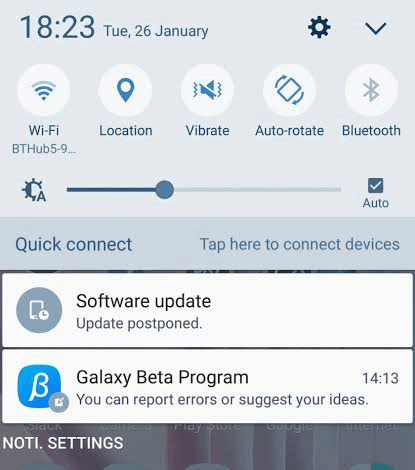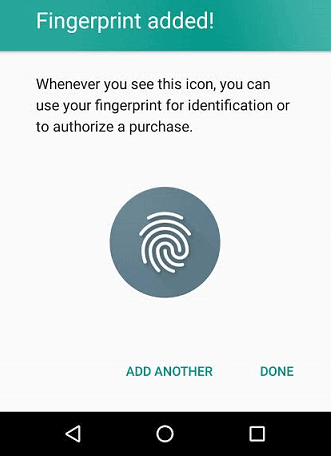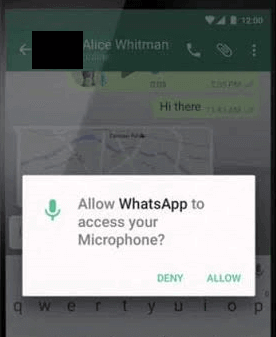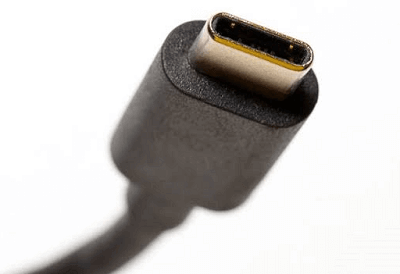Android Tutorial
Android Widgets
- UI Widgets
- Android Button
- Android Toast
- Android Custom Toast
- Android ToggleButton
- Android CheckBox
- Android Custom CheckBox
- Android RadioButton
- Android Dynamic RadioButton
- Custom RadioButton
- AlertDialog
- Spinner
- Auto Complete Text View
- ListView
- Custom ListView
- RatingBar
- WebView
- SeekBar
- DatePicker
- TimePicker
- Analog clock and Digital clock
- ProgressBar
- ScrollView Vertical
- HorizontalScrollView
- Image Switcher
- Image Slider
- ViewStub
- TabLayout
- TabLayout with FrameLayout
- SearchView
- SearchView on ToolBar
- EditText with TextWatcher
Activity and Intents
Android Fragments
Android Menu
Android Service
Android AlarmManager
Android Storage
Android SQLite
XML and JSON
Android Multimedia
Android Speech
Android Telephony
Android Device
Camera Tutorial
Sensor Tutorial
Android Graphics
Android Animation
Android Web Service
Android Examples
- QR Code / Bar Code Scanner
- RSS Feed Reader
- Volley Library Fetching JSON Data from URL
- Linkify Example
- Introduction Slider (Launch very first time when app start)
- RecyclerView List
- Swipe to Delete RecyclerView items with UNDU
- Swipe to refresh Android Activity
- Volley Library - Registration, Log-in, and Log-out
- Network Connectivity Services
- Firebase Authentication - Google Login
- Android Notification
- Using Google reCAPTCHA in Android Application
Android Social
Android Versions
Android Misc
- Android Device Manager
- Android Studio
- Android Auto
- Android to Mac
- Android Messages
- Android TV
- Android Screenshot
- Android Pay
- Android Watch
- Android Phones
- Android Tablet
- Android Find My Phone
- Android One
- Android Wear OS
- Android Data Recovery
- Android Antivirus
- Android x86
- Android Emulator for PC
- Android File Manager
- Android ad blocker
- Android Podcast App
- Fortnite Android an Epic Game
- FaceTime on Android
- ShowBox for Android
- Android App Store
- Virus Removal for Android
- cache in Android
- Root Android Device
- Android Screen Recorder
- block a number
- Canon printer app
- Wireless HP printer app
- How to Update Android
- iMessage for Android
- iCloud for Android
- Best Call Recorder
- Videoder Android
- YouTube Video Downloader
- Airdrop for Android
- RoboKiller for Android
- Clean my Android Phone
- How to hide apps, files, and photos on Android
- Best weather apps with widgets for Android
- Android File Transfer for Mac
- Mobdro for Android
- Screen Mirroring in Android
- Stock market apps for Android
- How to turn On or Off safe mode on Android
- Best browsers for Android
- Best clocks for Android
- Best email apps for Android
- Music player for Android
- Android smartwatch for women
- Best keyboard for Android
- Best messaging app for Android
Android MCQ
Android Interview
Android Quiz
Android Marshmallow
Android "Marshmallow" (Android 6.0) is the sixth major version of the Android operating system. During the development, its codename has Android M. It is the 13th version of Android. Its first beta version was released on May 28, 2015, and officially it was released on October 5, 2015, with the Nexus device.
The primary focus of Marshmallow is to improve the overall user experience. It introduces new permissions architecture, new power management systems that reduce background activity, new APIs for contextual assistants, fingerprint recognition for native support.
Android Marshmallow History
Android Marshmallow was initially codenamed as "Macadamia Nut Cookie". The developer preview build codenamed as Android "M" released on May 28, 2015, at Google I/O. It was initially updated in Nexus 5 and Nexus 6 smartphones, Nexus 9 tablet, and Nexus Player set-top-box.
The second developer preview was released on July 9, 2015, and the third and final preview was released on August17, 2015, announcing that Android M would be termed as Android "Marshmallow". The final version of Android Marshmallow was released on October 5, 2015, for Nexus 5, 6, 7, and 9.
Android Marshmallow Features
There are several new features added in the Android Marshmallow after the Android Lollipop. Some of them are mentioned below:
Slight change to the lock screen
The screen lock is similar to Lollipop. There is only slightly change here is replacing the dialer with camera shortcut in the bottom corners. Google has decided to replace the dialer app with access to voice commands.

The notification area
Google always trying to improve the notification area; even if a bit, it means there are definitely some changes in here.
Swipe down once with one finger, and you will see your current notifications, which can be expanded or accessed. Swipe down again, and you will show up the Quick Settings menu.

Doze Mode - more battery life
Doze mode is introduced to help disappointed users to stay off their phones for a longer time, without recharging all the time. Doze Mode extends standby battery life by putting the phone in a deeper sleep during a longer period of inactivity.
Native fingerprint support
Google released fingerprint API, which gives developers to tap into our phones biometric authentication. It means a fingerprint reader is better for unlocking the device, and it offers a secure connection with its users.

App permissionst
Before Android 6.0, downloading an app meant we have to accept all the app's permission. Some of that permission is unreasonable and unnecessary. With Android 6.0 Marshmallow, you can download any app and select the permission you allow it to access.

RAM memory manager
Google has added a new section in the "Memory" setting in which the device shows you how much the Ram memory is utilized by an app. You can able to take necessary action if any app is going rogue.
USB Type-C and USB 3.1 support
USB type C allows all kinds of interaction, such as data transfer, charging, accessory connections, and many more. It has a faster speed and storage connection due to USB 3.1. You don't require to think about it's up and down side.

Direct Share
Marshmallow enabled a new sharing feature known as Direct Share. This feature remembers which things you share and in which app you are sharing. While continuously sharing, it will recommend those people whom you generally use to communicate. It is a small thing, but it could save a lot of time if you share with the same people.


